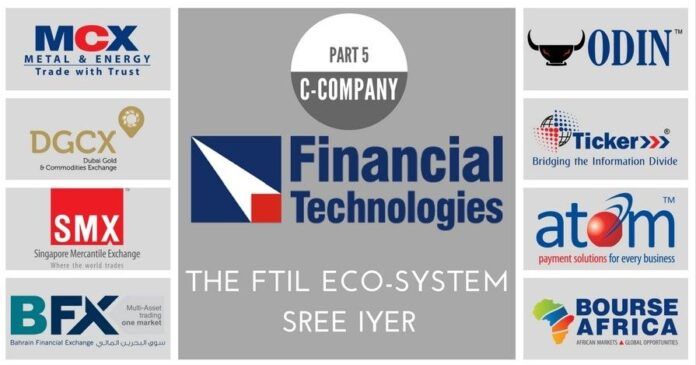
Parts 1, 2, 3 and 4 of this series can be accessed from this page. This is Part 5.
Making a mark in the World Software
Growth of Software companies in India
The full impact of Economic liberalization was felt only after 1996 or so, when companies like Infosys, Wipro started blooming on the international scene. The world woke up to the real and imaginary fears of a rollover of the data from 99 to 00 when the new millennium was going to be ushered in. The moniker Y2K was born.
That so many verticals sprung up from FTIL posed two challenges to the NSE, the stock exchange of the C-Company. First they had to match each and every product and second, they needed to stop the desertion of their customers to Shah run companies.
While the Y2K problem and similar issues made the Indian IT companies grow quickly, the image of India’s IT as being an outsourcing specialist got stuck. But Jignesh Shah was cut from a different cloth. He wanted to dominate the world markets with his powerful software offerings. This technology was born, bred and brought up in India.
FTIL – The fount of knowledge
A concept that is frequently mentioned in the startup world is that of Verticals. You create a fundamental technology that can be adapted for different applications and then you build each app, called a vertical. This is one way to multiply the wealth in the startup ecosystem. While it sounds easy in concept, it is difficult to implement in practice. Which is why the verticals that Shah built around his core jewel Financial Technologies (FTIL) is noteworthy.
Having built MCX in a very short time, it came as no surprise when Shah could use the same building blocks to create the technology for DGCX, as shown in Figure 1.

How MCX established itself as a Global Player
The runaway success of MCX in India emboldened Shah to venture outside of India. First, there was a strategic collaboration with The Baltic Exchange, based in London to launch freight futures index contracts (could not be launched as regulations did not allow indexes to be traded at that time), followed by a deal with the Chicago Climate Exchange to offer the first environmental products to be traded in the subcontinent. Then, there was the establishment of Dubai Gold and Commodities Exchange (DGCX) through a joint venture for which he was invited by the Sheikh of Dubai, by which MCX, along with FTIL became the first commodities exchange that co-owned an international exchange.
It is one thing to run an exchange in India, where most of the resources are local such as computers/ programmers/ support etc. But to be invited to establish a joint venture with the Government of United Arab Emirates (UAE) is something of an honor, for Shah beat out all the other competitors who may have wanted to partner with Dubai. DGCX’s charter was clear – it wanted to be bigger than the Asian peers[1].
On November 12, 2007, Dubai Multi Commodity Center (DMCC), the Govt. organization that owned 50% of DGCX, bought 1% more from Shah to become the majority partner. The price? $12.5 million. Based on that DGCX was valued at $1.25 billion[2]. That was within two years of operation! This would have caused Chidambaram and his minions in C-Company major heartburn.
When a company wants to compete on an international arena, it goes up with the best of the best and must be able to hold its own, and in many cases be better than the established competitors. Rules are different, the setting is different, and delivering on promises can be excruciatingly stressful. One false step and it will take generations to regain lost ground. But if the foundation was designed properly, with scalability and customizability built in from the ground up, then it is a matter of hard work and perseverance. And that is what Shah and his team did. It was nothing short of breathtaking.
More exchanges followed soon after

If you have the foundation done right, it is easy to do what is called as cookie-cutting in startup parlance. FTIL could take the technology used in MCX and build several exchanges, many of which are mentioned above.
Shah built small crack development teams, who would, on short notice leave for these exotic destinations and hunker down to work overtime to get the customization done and get the exchange up and running smoothly. What FTIL had was something similar to Idli batter, which, with a bit of creativity can be made into Idlis, Dosas and Uthappams!
From Commodities to Real-time analytics and nationwide electronic payment service
Once MCX was up and running, it needed to bring buyers and sellers together. There was a need to have a real-time information system that provided cost-effective data and analytics, i. e. something similar to what Reuters and Bloomberg provided. In 2005, Shah developed TickerPlant that provided all that. It was fast, used a very small data footprint and could compete effectively.
In 2005, FTIL also developed Atom, which allowed for secure payment over mobile phones (a precursor to today’s hugely popular PAYTM). Again this was a need so that farmers and rural entrepreneurs could transact with MCX. Both these apps were incubated from FTIL(Figure 3).
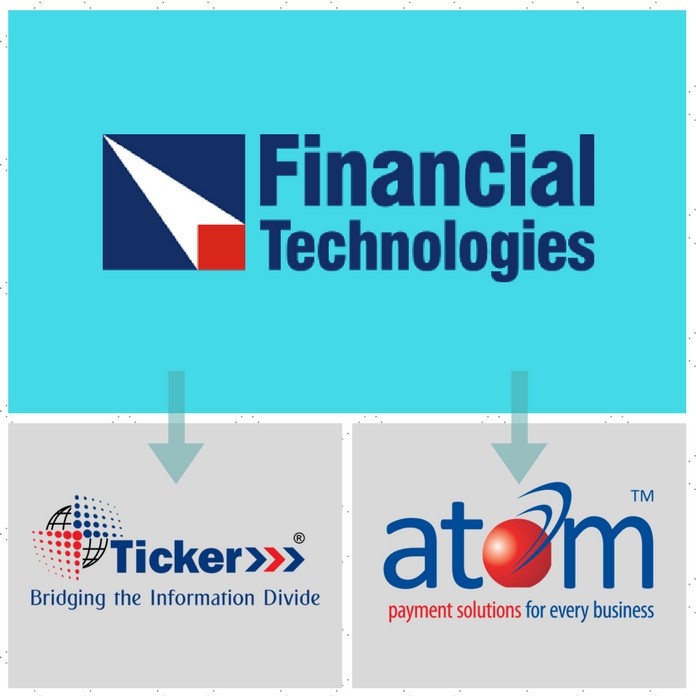
That so many verticals sprung up from FTIL posed two challenges to the NSE, the stock exchange of the C-Company. First they had to match each and every product and second, they needed to stop the desertion of their customers to Shah run companies. And they responded in the only way they knew – get the Govt. to put obstacles in Shah’s path (see Figure 4).
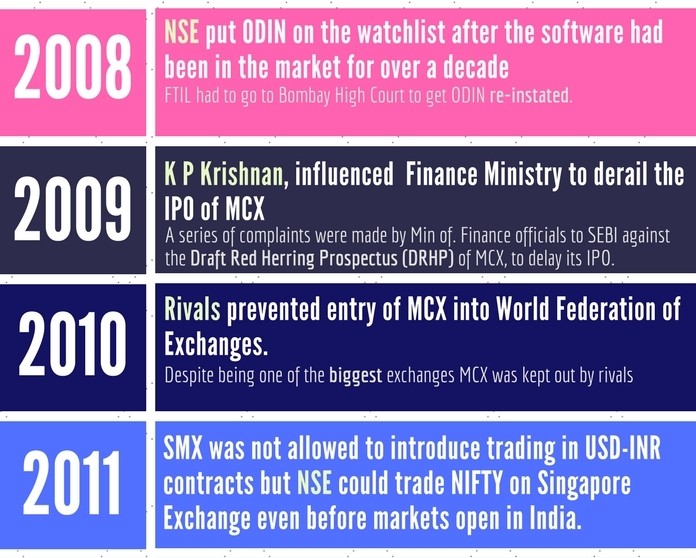
The video below describes Shah’s endeavors to put India on the global map as a major player in the world of finance.
To be continued…
[1] Dubai Gold Exchange races to beat Tokyo – Jun 29, 2005, Economic Times of India
[2] DMCC becomes majority shareholder in DGCX – April 4, 2007, Gulf News markets
- Indian Parliament’s Special Session is convened to mark the shifting to new Parliament building - September 3, 2023
- Why did Rajat Sharma of India TV not declare that Adani owns more than 16% shares in his channel? - January 29, 2023
- Prannoy Roy to get Rs.605 crore from Adani as per Stock Exchange filing. Why is Income Tax not acting on Roys’ dues of over Rs.800 crore? - January 4, 2023

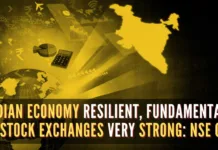
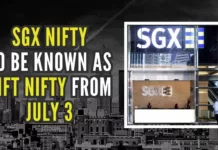








What hurts greatly is that this government has been talking about abolishing APMC and monitors the progress in eNAM very closely. All this was thought of by Jignesh Shah a decade back and all of this were to be a private initiative. Our reform measures – why do they always have to be a catch up game. Even if there is a trend setter among us, forget recognizing, we put up hurdles. This NSEL episode should take the cake.
Too technical for this old non-technical and non-financial person. However, the end is clear and raises only one question in my mind: how much wealth and power does P.C.Chidambaran want in his life. A corollary question is : to what depth will Sonia’s Congressmen sink in order to regain their power, perks and pelf?